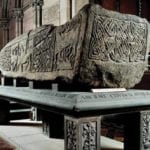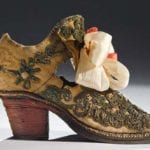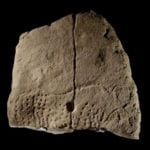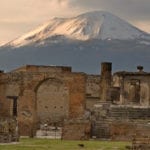 Mysteries
Mysteries  Mysteries
Mysteries  Music
Music 10 Musicians Who Changed How Everyone Plays Their Instruments
 Humans
Humans 10 Inventors Who Died Awful Deaths in Their Own Creations
 Animals
Animals 10 Ways Animals Use Deception to Survive
 Movies and TV
Movies and TV 10 Misdirections Directors Used to Manipulate Actors
 Politics
Politics The 10 Boldest Coup Attempts of the 21st Century
 Weird Stuff
Weird Stuff 10 Things That Would Have Killed You in the Old West
 Books
Books 10 Pen Names More Famous Than Their Authors
 Creepy
Creepy 10 Unnerving Legends from Around the World
 Movies and TV
Movies and TV 10 Amazing Lead Actor Ideas for Superhero Movies
 Mysteries
Mysteries 10 Bizarre, Little-Known Phenomena
 Music
Music 10 Musicians Who Changed How Everyone Plays Their Instruments
 Humans
Humans 10 Inventors Who Died Awful Deaths in Their Own Creations
Who's Behind Listverse?

Jamie Frater
Head Editor
Jamie founded Listverse due to an insatiable desire to share fascinating, obscure, and bizarre facts. He has been a guest speaker on numerous national radio and television stations and is a five time published author.
More About Us Animals
Animals 10 Ways Animals Use Deception to Survive
 Movies and TV
Movies and TV 10 Misdirections Directors Used to Manipulate Actors
 Politics
Politics The 10 Boldest Coup Attempts of the 21st Century
 Weird Stuff
Weird Stuff 10 Things That Would Have Killed You in the Old West
 Books
Books 10 Pen Names More Famous Than Their Authors
 Creepy
Creepy 10 Unnerving Legends from Around the World
 Movies and TV
Movies and TV 10 Amazing Lead Actor Ideas for Superhero Movies
10 Archaeological Discoveries That Were Made By Pure Chance
We’re always amazed when archaeologists come upon extraordinary and magnificent discoveries. Sometimes, the discoveries are rather small and maybe insignificant (such as a single coin from centuries ago), and sometimes, they’re bigger and incredibly important (such as a forgotten ancient city). While some important discoveries are made as part of well-planned expeditions and aren’t especially surprising, incredible archaeological discoveries are sometimes made by pure chance. Below is a list of 10 important archaeological discoveries that were uncovered completely by accident.
10 19th-Century Brothel

In 1997, the Smithsonian Institution commissioned an archaeological study of the site upon which the National Museum of the American Indian was to be built and found artifacts, buried and untouched for more than a century, that could have only been from a wealthy household. These high-quality, expensive items were an unusual find in an area that was known to previously have been working-class neighborhood, and as a result, old maps and real estate records were consulted. It was then confirmed that the artifacts were what remained of a 19th-century brothel which was run by Mary Ann Hall, a mysterious, successful entrepreneur.
Prior to the dig, archaeologists didn’t know exactly what they were going to find, although they did have their suspicions. Archival research done before the archaeological excavations revealed that the house was occupied by a rather large number of females, a fact which the researchers and archaeologists found rather odd. However, it was the artifacts that pointed to the actual, slightly scandalous nature of the establishment. Hundreds of champagne corks and broken bottles, shards of expensive porcelain, seeds from exotic fruits, and women’s grooming items made it obvious that the house was indeed a brothel. It was no ordinary brothel, however. It stood in close proximity to Capitol Hill and was visited by elite clientele.
Today, many of the artifacts remaining from Mary Ann Hall’s brothel are kept at the Historical Society of Washington, DC, and can be viewed with an appointment.
9 Herculaneum
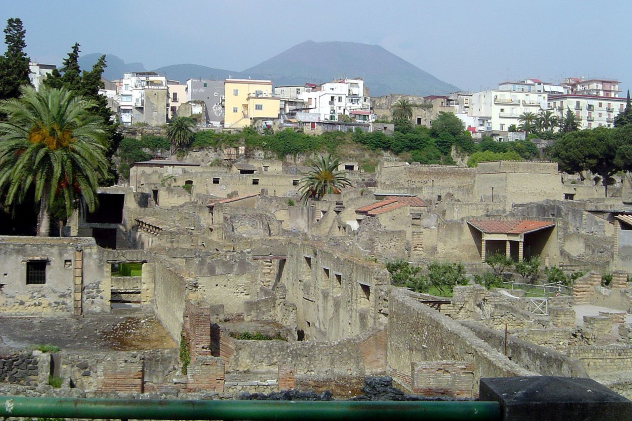
Most people are familiar with the destruction of Pompeii, which occurred in AD 79. After all, it’s now one of the biggest tourist attractions in Italy and draws thousands of tourists each year. However, a significantly smaller number of people are aware that the day Mount Vesuvius erupted, it also destroyed another Roman city called Herculaneum.
On the day of the eruption, Pompeii was downwind from the volcano and was thus quickly buried under a covering of ash. Herculaneum, on the other hand, was upwind and was destroyed more than 12 hours later when it was hit by a blast of scorching ash, rock, and volcanic gas. The blast was of such high temperature that it instantly carbonized everything in the city, leaving Herculaneum extremely well-preserved (more so than Pompeii, in fact).
While the city of Herculaneum was never quite lost or forgotten, it nevertheless wasn’t until the 18th century that it was “rediscovered”—completely by accident. In 1709, a farmer was digging a well and found some elaborate marble stonework. It was later realized that he had actually discovered the remains of the magnificent Roman theater of Herculaneum, which had been lying undisturbed beneath his fields for over a 1,000 years.
After the initial accidental discovery, a series of “robber” shafts and tunnels were dug to strip the site of any valuable items. Not long after, however, Herculaneum was explored on a more scientific basis for King Charles of Bourbon. In the 20th century, archaeological excavations recommenced on a far more modern and scientific basis, which resulted in the discovery of more interesting Roman artifacts.
8 The Edinburgh Vaults
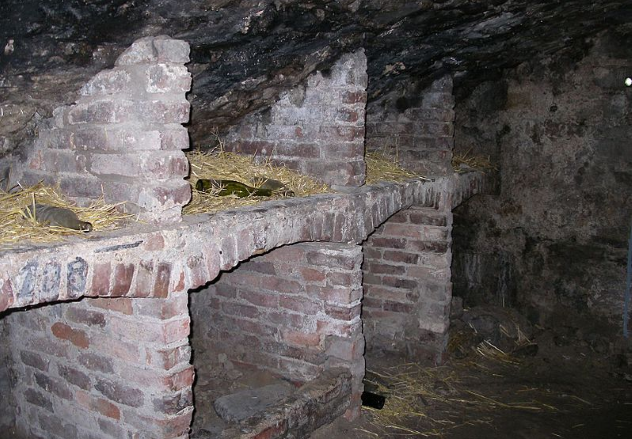
In 1785, the construction of the Edinburgh Vaults commenced under the South Bridge in Edinburgh, Scotland, and was completed and opened in 1788. The South Bridge’s surface was thus dotted with numerous booming businesses with their workshops located underneath them, while still below this, living quarters existed. The lower you were under the bridge, the lower your social status was.
Life under the bridge was in constant motion and development. Criminals moved illegal materials through the tunnels in a black market, a red-light district with gambling venues cropped up, pubs and brothels were established, and crime and murder prospered. It is even said that at one point, serial killers were able to murder over a dozen victims and store the bodies in the vaults without being detected or stopped.
However, the conditions in the vaults were so bad that even the poorest citizens were leaving their underground slums between 1835 and 1875. The vaults were eventually shut down and forgotten.
In the 1980s, a rugby player and bar owner named Norrie Rowan tried to help his Romanian colleague Cristian Raducanu (who had defected to the UK) escape the Romanian secret police and discovered a tunnel underneath his bar that led to the Edinburgh Vaults. The find led to Raducanu’s successful escape as well as the vaults’ revival. The tunnels and chambers were excavated and restored. When children’s toys, medicine, and other household items were discovered, it was realized that the Edinburgh Vaults were home to many unfortunates. Today, the vaults are a major tourist attraction for those seeking the thrill of ghost tours.
7 The Venus De Milo
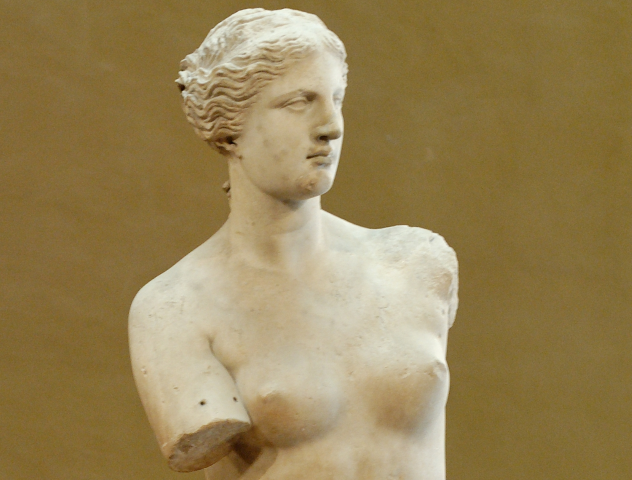
The famous sculpture of Venus de Milo was discovered in 1820 by a farmer named Georgios (or Yourgos) Kentrotas on the Aegean Island of Melos (aka Milos or Milo). Kentrotas was in the process of plowing a field when he came upon a cave which contained within it half of a statue of the goddess Aphrodite.
The events that followed are not quite clear, and different sources provide slightly different accounts of what happened next: Some sources claim that Kentrotas hid the statue in a barn, wishing to keep it for himself, but the statue was eventually discovered and confiscated by Turkish authorities. Shortly after, the French ambassador to Turkey bought it and (after some repair work) presented it to King Louis XVIII of France, who placed it in the Louvre, where it remains to this day.
Other sources claim that a French officer named Olivier Voutier was visiting Melos at the time when Kentrotas found the statue and urged him to look for the other half of it. Kentrotas obliged and soon discovered the other half, along with a sixth-century BC statue of young Hermes and Hercules as an old man. Voutier made a sketch of the statue of Aphrodite and sent it to Louis Brest, the French vice-consul for Melos, who in turn sent it to the French consul in Constantinople. The latter decided to obtain the statue of Aphrodite for France and sent an envoy to Melos. In the meantime, however, Kentrotas sold the statue to another man on behalf of the prince of Moldavia. The statue was ready to be placed aboard a ship for Romania when the French ship sailed in. After some bargaining, the envoy and Louis Brest bought the statue as a gift for Louis XVIII. Venus de Milo then appeared in the Louvre on March 1, 1821.
It’s interesting to note that a pedestal, a piece of an upper left arm, and a left hand holding an apple were found along with the statue. However, it’s not clear whether these fragments belonged to the Venus de Milo, and while attempts to create a design to replace the missing arms were made, it was eventually decided to leave the statue in the state it was in when it was accidentally found by the Greek farmer.
6 Chinese Mummy
In 2011 in Taizhou, a city located on the eastern coast of China’s Jiangsu province, road workers were in the process of widening a road, which involved clearing the way by digging several feet into the ground. When the workers were digging about 2 meters (6 ft) below the surface, they struck a large, solid object. Realizing that the object they’d accidentally found might be of significant value, they contacted a team of archaeologists to excavate the area.
The archaeologists then determined that the object was actually a tomb with a three-layered coffin inside it. When the main coffin was opened, layers of silk and linen covered in brown liquid were noticed, but the biggest surprise still awaited: Beneath the linens and silks, they discovered the remains of a female body. The remains were so well-preserved that the eyebrows, hair, and skin of the woman were still intact after more than 600 years.
5 Palatial Roman Villa
When the designer Luke Irwin and his wife decided to convert an old barn on their newly acquired property in England into a room for table tennis, they came upon a most extraordinary find—a palatial Roman villa just 18 meters (60 ft) from their front door.
In an effort to put their table tennis room together, the Irwins hired electricians to lay cables for lights. The spectacular discovery almost wasn’t made at all: The electricians initially suggested stringing up an overhead cable from the Irwins’ house in order to supply the power to the barn, but thankfully, Irwin insisted on an underground cable being laid instead. The electricians gave in, and soon, the drilling process began. Just 46 centimeters (18 in) below the surface, they hit a strange, hard layer. The layer consisted of pieces of mosaics.
Irwin quickly sent a photograph of the mosaic to the council, and shortly after, archaeologists arrived at their house, ready to excavate the site. They found that the mosaic formed part of the floor of an elaborate and extremely well-preserved villa, which dates back from between AD 175 and 220. The dig also unearthed hundreds of oyster shells, high-status pottery, brooches, coins, and the bones of wild animals. Other finds included a Roman well and the stone coffin of a Roman child, which had been previously used as a flower bed. The site hadn’t been touched since the villa collapsed more than 1,400 years ago. As a consequence, it has been unsurprisingly been declared extremely important.
4 The Lyceum

Plato was the founder of the first university in the Western World, called the Academy. Aristotle was a star pupil of the Academy, and in 335 BC, he went on to start his own school, called the Lyceum, in Athens. Over time, however, the Lyceum was lost, and efforts made by archaeologists to find the famous school were fruitless for over more than 100 years.
Nonetheless, in 1997, the Lyceum was accidentally discovered by workers working on a construction site for the projected Museum of Modern Art. Imagine the surprise when excavations carried out by the workers on an unpaved parking lot revealed an ancient complex with a central courtyard and a wrestling area (known as palaestra)! Archaeologists later confirmed that the magnificent discovery was part of the Lyceum. Of course, the spectacular discovery of the ancient school meant that an alternative site would have to be chosen for the art museum, since the remains of the Lyceum have been turned into an outdoor museum.
3 The Banwell Caves
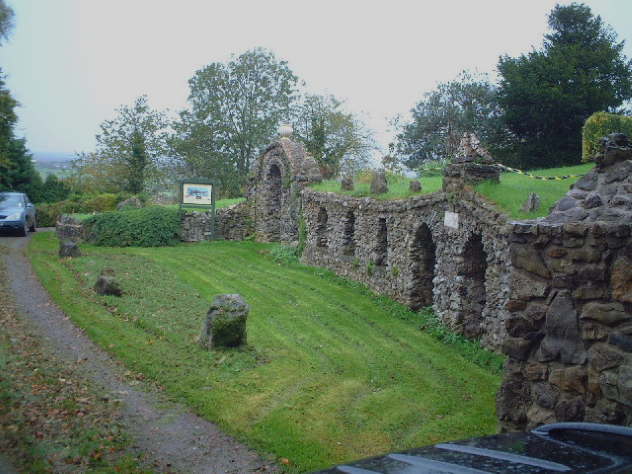
The Banwell Caves consist of the “Stalactite Cave” and the “Bone Cave.” The Stalactite Cave was discovered by chance by local miners in 1757 but was left untouched until 1824, when it reopened with the goal of attracting paying visitors and raising money for a parochial school. However, access to the cave was difficult, and thus, an attempt was made to create a more convenient entrance. The attempt failed, but it led to the accidental discovery of the Bone Cave. The Bone Cave is so named because upon its discovery, it was filled with mud containing bones of animals that were up to 80,000 years old and no longer native to England.
The site where the discovery occurred was owned by the bishop of Bath and Wells, George Henry Law. A cottage was built on the side of the hill and was gradually enlarged. Various ornamental buildings were also built. The best bones from the Bone Cave were displayed in one such building. It’s interesting to note that the bishop firmly believed that the discovery of animal bones was proof of Noah’s flood. The caves continued to operate for some time after the bishop’s death but eventually closed to the public in 1865.
2 The Ruins Of Serdica
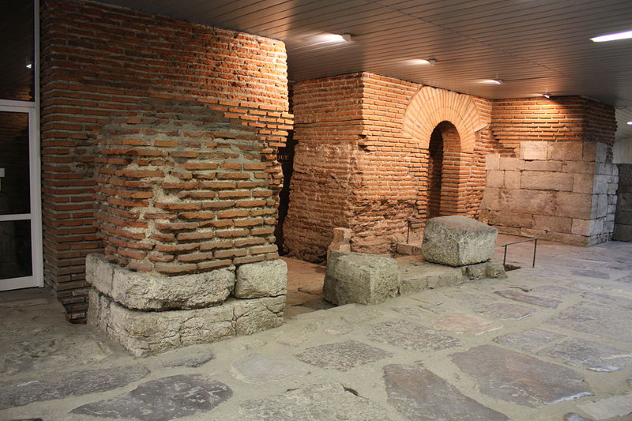
In 2012, engineers excavating a new line for the metro in the Bulgarian capital of Sofia came upon the remains of the cosmopolitan city of Serdica, where Constantine the Great, the first Christian Roman emperor, lived for a year while looking for a new capital for his empire. Serdica was a major metropolis and contains physical traces of Greek, Roman, and Byzantine cultures.
The ruins discovered are mostly from the time when Serdica was the capital of the Roman province of Inner Dacia—the time when the city was at its largest and most flourishing. Archaeological excavations of the site unearthed floor mosaics containing symbolic Roman vine leaves, early sewage systems, a wheel of fortune (which was probably used for bringing good fortune to the inhabitants), and private bath houses of ancient Romans who lived there.
Today, the site where the ruins of the ancient city of Serdica were found has been transformed into an open-air museum.
1 The Artwork Of Lascaux Cave
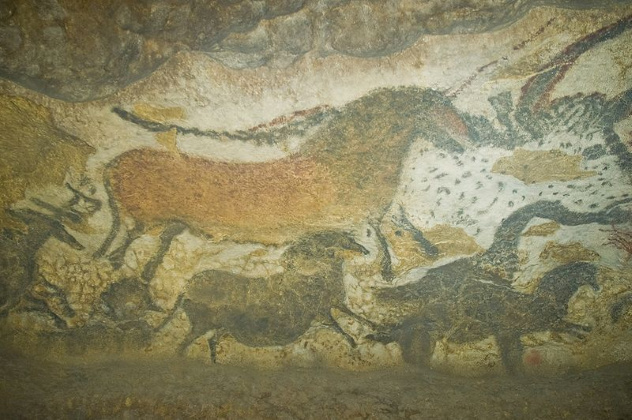
In 1940, a group of teenagers accidentally discovered the ancient artwork in Lascaux Cave near Montignac, France, after following their dog into a cavern. Shortly after, archaeologists were notified of the find and called in to investigate.
The Lascaux Cave is decorated with around 600 painted drawings of animals and symbols as well as almost 1,500 engravings. The drawings are mostly of animals, including horses, rhinos, deer, stags, and mythical creatures. Only one human figure has been drawn inside the cave—a bird-headed man with an erect penis. The paintings found in the cave are considered to be the finest examples of art from the Upper Paleolithic Period. Archaeologists believe that the cave was a center for hunting and religious rites.
The Lascaux Cave was opened to public in 1948 but was closed in 1963 because the artificial lights and carbon dioxide had caused damage to the delicate artwork. A replica of the cave was opened in 1983 and receives thousands of visitors each year.
A student from Ireland in love with books, writing, coffee, and cats.

